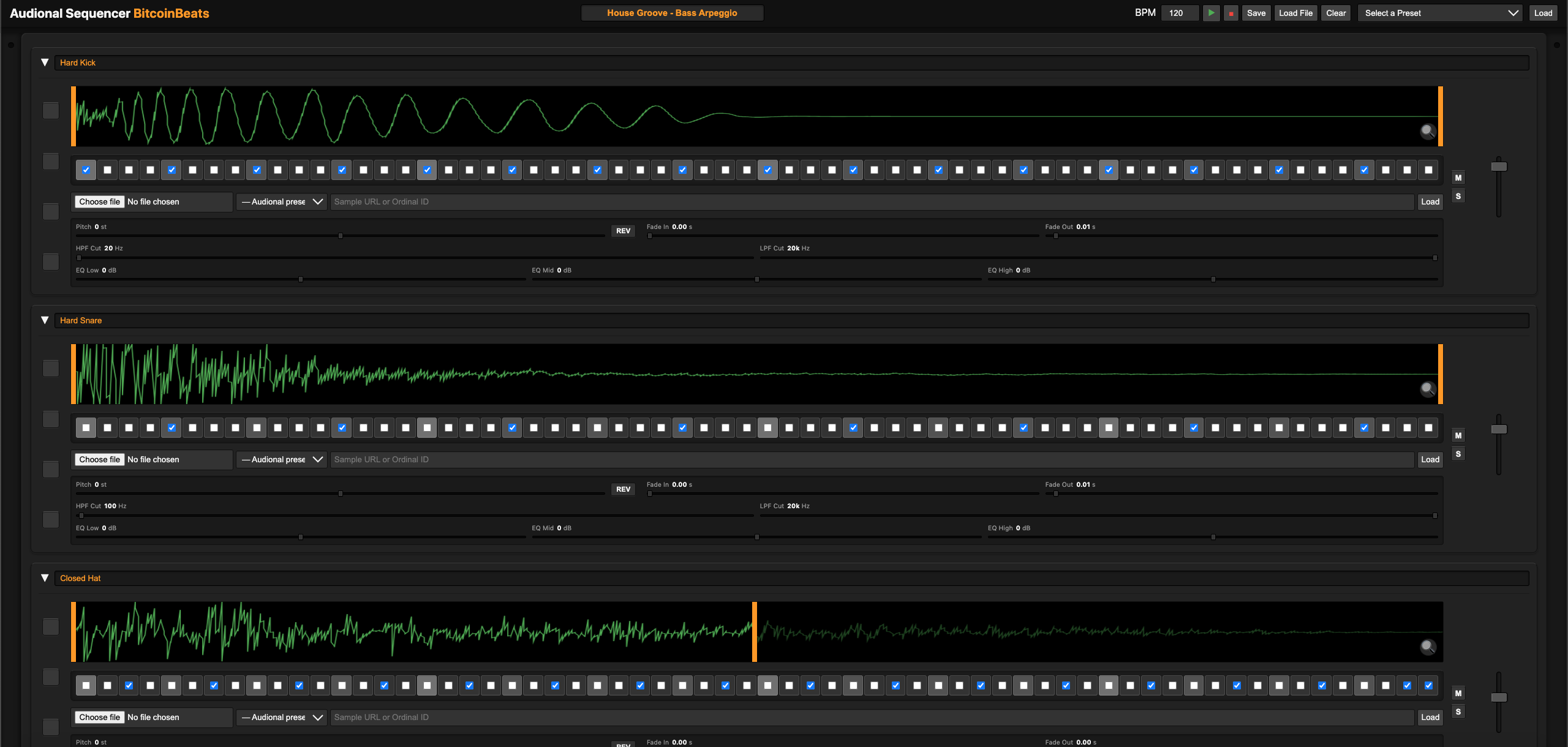Create Music Directly on the Bitcoin Blockchain
Audionals is a pioneering protocol that transforms music production, distribution, and rights management by offering an on-chain digital audio workstation built on the Bitcoin blockchain.
Our On-Chain Sequencers:
Audional Sequencer B64x
Our classic 64-channel sequencer for robust on-chain music production.
Audional Sequencer X (ASX)
The next-generation BitcoinBeats sequencer with advanced features and an AI enhanced workflow.
Tune In: The Audionals Show
Join host Jim.btc as he dives deep into the world of on-chain music with Audionals. Discover insights, interviews with pioneers, and the latest developments in creating, owning, and distributing music directly on the blockchain.
Follow @jimdotbtc and
@BitcoinLive1 on X for show announcements and archives.
Explore The Show →
Key Benefits of Audionals Protocol
True Ownership
Every element involved in a song's creation is owned and held within individual wallets, eliminating the need for traditional intermediaries.
On-Chain Production
Create music directly on the Bitcoin blockchain with our decentralized audio workstation, ensuring immutable recordings of your creative process.
Transparent Attribution
Comprehensive and transparent attribution for every component used in creating a song, recognizing all contributors automatically.
How It Works
Create Music
Use our on-chain digital audio workstation to compose and produce music directly on the Bitcoin blockchain.
Secure Ownership
Every element of your creation is securely managed and transparently documented on the blockchain.
Distribute & Collaborate
Share your music, manage rights, and collaborate with others, all within the transparent framework of Bitcoin.
Featured Ecosystem Projects
View More →Loading featured projects...
Latest News
View All Posts →Audional Sequencers: B64x & New ASX (BitcoinBeats)
Our sequencer lineup is growing! Use the robust Audionals B64x for 64-channel production, or explore the Audional Sequencer X (ASX), our next-gen BitcoinBeats tool with advanced features for decentralized audio creation.
Music Rights Reimagined on Bitcoin
Discover how protocols like Audionals are revolutionizing rights management using the Bitcoin blockchain.
Meet the pioneers and artists leading the way...
Read More →Join the Future of Music Production
Start creating music directly on the Bitcoin blockchain and take control of your creative rights with Audionals.



